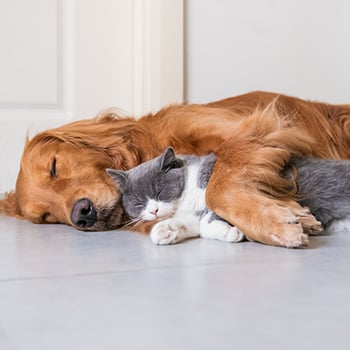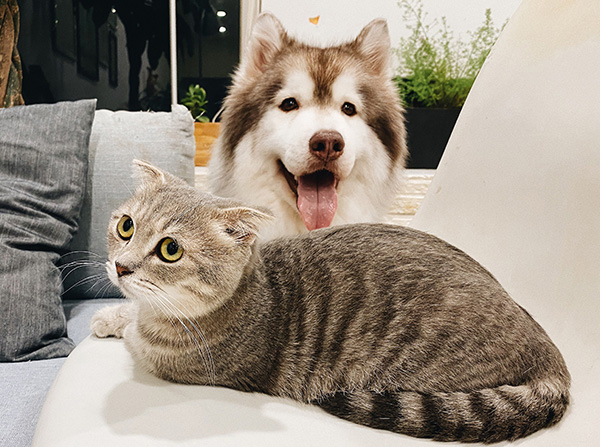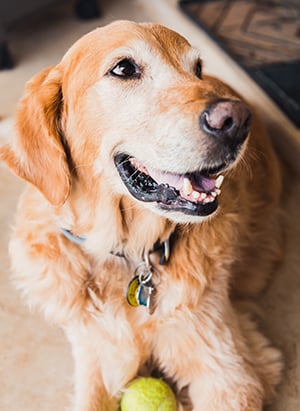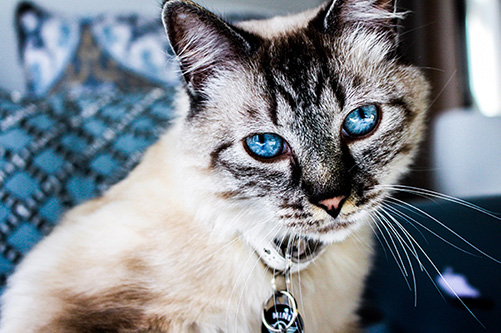
What will happen to your pet if you're no longer able to care for them? The recent COVID-19 pandemic emphasized how crucial it is that pet owners take the time to plan out their cat or dog's care plan in case they become ill or are no longer able to care for them. Our pets are counting on us to have a backup plan.
In this episode of Paws and Play, we talk with Debra Hamilton of Hamilton Law & Mediation about why it's important to have a plan in place in case you get sick, injured, or pass away.
She also shares tips for deciding who to choose as your pet's caregiver, who needs to know about the emergency pet care plan (your chosen caretaker, your lawyer, and your veterinarian), and how much money you should consider setting aside to provide for your pet's long-term care.
From pet trusts to living wills and final wills, Debra has created an amazing program called the MAAP Pet Care Planning Blueprint. And, as Debra says, "I'm not dead yet!" It isn't just about planning for what will happen to our pets when we aren't around anymore. Things like broken ankles, hospitalization, transitioning into a long-term adult healthcare or hospice facility, or accidents that happen while traveling can also affect your pet's situation. In an uncertain time, having a plan in place to protect our beloved pets will give you some peace of mind.
When You Might Need Help Taking Care of Your Pet
"I'm Not Dead Yet!"
There are many situations that don't involve your passing away that require having a plan in place for your cat or dog's care. In Debra's case, she broke her ankle in 2013 and found herself unable to fully care for her nine dogs. When she called two friends who she hoped would be able to care for them, she found that one had also broken her arm, and the other was renovating her kennel and didn't have enough room.
She realized during her recovery that she needed to make a plan, and a program that other people could use to map out a dog or cat's care when their owner wasn't able to take care of them. The MAAP Plan was born.
MAAP stands for:
- Make a Plan
- Address the Needs of Your Pet
- Appoint Caregivers
- Publish your plan.
"Quite frankly, your pets are depending on you to take the time to make a plan for them if something happens to you long-term or short-term," says Debra. "If you put all your plans in a will, you better make sure you're going to die because if you don't, those plans don't come to fruition. You want to have something outside your will, and you want to have something inside your will."
Here are some examples of when you need a MAAP plan for your pets:
- Sudden illness or hospitalization (e.g., pneumonia, COVID-19)
- Injuries (e.g., broken bones, traffic accidents)
- Long-term treatments (e.g., chemotherapy)
- Natural disasters
- Caring for a sick family member
- Transitioning to an adult care facility where pets aren't allowed
- Death

What Your Pet Care Plan Should Include
-
Choose Three People as Caregivers. Have a list of at least three people who you trust and would be able to care for your cat or dog. Only one of these people should be a family member. Having more than one person as a potential caregiver means that if the first person on the list is unable, there are two more listed as your next choices. Speak with any potential caregivers to make sure they are up for the job if needed.
-
Details for Your Pet's Care and Well-being. You know your dog better than anyone. It's important to make an outline of their routine, the regular care they receive and to include any idiosyncrasies they might have. List out what food they eat, when they eat it, and how much daily exercise they need. Do you have their nails trimmed regularly, and do they need grooming appointments? How do they get along with other cats or dogs? Do they do well around children? Are they obedience trained or have behavior issues that are important for your caretakers to know about?
Having this outline makes it easier for your chosen caregiver to keep your cat or dog as healthy and happy as possible.
-
What to do for Veterinary Care Decisions. Include your wishes for what to do in case your pet becomes ill or injured. This removes a lot of pressure on caregivers if they need to make a tough choice between stopping or continuing veterinary treatment for your pet. "Some people, if their dog has bone cancer, will opt to have the leg removed; some people won't. You need to include that so that your plans are taken care of if something happens to you," explains Debra. "You want to make sure that you don't burden the person who is taking care of your pets."
-
A Free-Standing Pet Trust. An established trust outside of your will is essential, as it provides funds for your pet's care while you're incapacitated. You don't want the trust in your will so that it can be used for situations where you're still living. This way, your attorney knows that there is money set aside and can be used by the pet's caregiver to follow the care instructions you've outlined.
-
Share with the People Who Need to Know. Your plan needs to be shared with more than the pet's chosen caregivers. Your veterinarian needs to be aware of who is able to make important veterinary care decisions. Your attorney also needs to know who will be taking care of your pet and who will be allowed to use your free-standing pet trust.
In some cases, you might need to check with an adopted pet's rescue organization or a co-owner that needs to be made aware of your pet care plan. A rescue organization might have guidelines about where a pet can go if you or your chosen caregiver are no longer able to care for them.
Download Our Treatment Authorization Form
What If Your Pet's Caregiver Doesn't Follow the Plan to the Letter?
 What happens if your pet's caregiver doesn't quite follow your care plan as you expected? It's important to have reasonable expectations when outlining your cat or dog's care.
What happens if your pet's caregiver doesn't quite follow your care plan as you expected? It's important to have reasonable expectations when outlining your cat or dog's care.
"When I make the MAAP plan, people put incredibly ridiculous terms as the plan they make and addressing the needs of the pets," says Debra. "I always say to them, 'What are the four most important pieces of this?' And then, we talk to the caregiver about the four most important pieces. And so far, I haven't had any caregiver who didn't provide the most important things to make the pet happy."
While you do have the option to move into litigation with caregivers that might have not followed your care plan, make conflict resolution easier by planning ahead. "Build in how to resolve conflicts that might arise without going to litigation.
Because first of all, these are your friends who are taking care of your pet. You have to keep friendships around, especially if it's short-term care of your pet. Really, they're doing the best work they can, and just having a conversation can sometimes clear things up. It really provides that perspective and perception that keeps friendships alive."
How Much Money Should You Put In Your Pet Trust?
How much money is enough for your pet's care? Debra often gets asked this question. "When you put money together, most of the time, people are transitioning their dogs to someone they know and love. They're not in it for the money. So, placing enough in it to transition the pet, $1,000 or $2,000, might be enough. Your attorney can always add more money to the pet trust."
If you're over 65, you might want to make sure the pet trust is irrevocable. You might ask why to do that if you decide at an older age to not have a pet. The full trust or remainder of the trust can then be gifted to an organization that's near and dear to your heart, such as a local rescue organization.
In Case of Emergency Pet Care Plan
Beyond having a plan for your pet's care in your will, a free-standing pet trust, and a published pet care plan, you'll want to post instructions and emergency contact information for first responders in case of an accident.
"If you're traveling with your pets or home with your pets, make sure you have the information for your caregivers on your fridge and on the dashboard of your car. Because if you have an accident, that pet is going to the shelter unless there's someone they can call," says Debra. "That way, you can call and have someone come get the pet. If you're traveling cross country, as I do when I'm traveling for dog shows, you can add nearby contacts to your emergency card."
If you do travel with your pet in the car, it's also important to make sure they are properly restrained for their safety. Not only can this protect them from injury in case of a car accident, but it also makes sure they can't run away if first responders open your car door to provide aid to you.

Be Proactive
"You want to be proactive. Before it happens, make a plan," encourages Debra. Whatever type of pet you might have, from cats and dogs to parrots and reptiles, having a plan for them in case you're not there to care for them is an expression of your love for them.
"It's scary, I know," Debra says. "We don't want to talk about our mortality. But if we truly love our pets, which we all do, they're depending on us to take the time to not just think someone will take care of your pets but really ask those people, give them a roadmap, and give them some compensation so they can transition your pet."
To learn more about how to set up a MAAP plan, or if you have questions about how to properly set up a free-standing pet trust, check out "MAAPing The Journey Your Pet Takes When You Can't Care For Them Yourself."
You can also watch Debra's free webinar about setting up a MAAP plan for your pets in this video:



